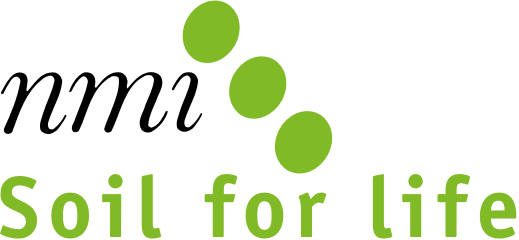- september 24, 2019
- Gepost door: admin_1712
- Categorie:
At the Dutch soil summit of 11 September 2019, the Ministry of Agriculture, Nature and Food Quality and Wageningen-UR presented their study on soil quality assessment, which describes the soil parameters that need to be measured in order to assess the soil quality of agricultural soils. In doing so, it stimulates integrative monitoring of the sustainability of soil management. This is an important step, because soil is essentially the basis for the realisation of current challenges for climate, water and biodiversity.
Measuring soil quality is a difficult task, because soils change under the influence of the soil biology, the farmer’s management as well as the weather. In addition, there are many different types of soil in the Netherlands, with each soil having different properties affecting soil functioning. A clay soil, for example, has very different characteristics than a sandy soil, both in terms of its agricultural value and the contribution it can make to a sustainable environment. This also means that the services that a soil can provide (also called soil functions) can vary widely.
Quantifying soil functions is challenging. Main reason is that the evaluation of soil functionality depends on the goal for which you want to use the soil. Is it crop production, carbon storage, nutrient retention, nature restoration or … The second reason is that multiple measurement methods exist, all with their own measurement error and applicability. This applies not only to soil physics measurements such as the infiltration capacity (that can be determined via a ring test, a disk-infiltrometer or the reverse borehole method), but also to more classic measurement methods like the analysis of the organic matter content. Depending on the desired accuracy, the most suitable measurement methods can (and should) be selected. Recent developments in the field of sensor technology additionally show that these sensors offer robust and inexpensive alternatives to current wet-chemistry methods.
Changes in temperature, soil moisture and groundwater levels – as a result of weather, soil texture and soil management – have been monitored with sensors for decades. The development of soil sensors, on the other hand, was boosted in the 1990s, with a particular focus on measuring the organic matter, texture and clay mineralogy. Over the last 20 years, progress has also been made in predicting aggregate stability, microbial activity and nutrient availability. The best-known example in the Netherlands of this is the use of Near InfraRed Spectroscopy (NIRS). Of the routine soil analyses carried out in the agricultural sector in the Netherlands, all basic soil characteristics are already determined via NIRS. Its accuracy is comparable to or better than the chemical and biological analyses, mainly due to a higher reproducibility. The precondition for this is that the database is sufficiently large, that the calibration has been set up by a laboratory with high quality standards and that the correct statistics have been applied. Recent developments in agricultural laboratories and companies like Agrocares show that sensor fusion with spectral information from the NIR and MIR spectrum in combination with XRF leads to surprisingly accurate estimates of agronomically relevant nutrients. The use of Deep Learning algorithms makes it possible to perform accurate ‘measurements’ for all types of soils. This applies not only to the basic soil characteristics such as pH, organic matter content and nitrogen supply, but also to the cation exchange capacity, the occupation of the CEC and the soils’ ability to buffer phosphate.
In summary, ground based sensors can give you quick insights in temporal and spatial variation of relevant soil parameters. Differences between and within plots and over time can be easily measured and monitored, and the results can be converted into site specific agronomic recommendations. An additional advantage is that spectra can easily be stored, making it possible to use algorithms at a later stage to accurately ‘measure’ soil properties. And here we come directly to the ambition of our Minister of Agriculture that by 2030 all Dutch agricultural soils will be sustainably managed. To achieve this, a baseline measurement will be carried out in 2019 and 2020 and the development of soil quality will have to be monitored and safeguarded in the coming years. In view of the great potential of the emerging soil sensors, we believe that both conventional and innovative measuring methods with sensors should be used from the start. Only then the management and monitoring of soil quality will be truly future-proof!
Adapted from original blog (in Dutch) from Ros, van Beek and Visser (2019).
Deze blog is ook gepubliceerd op Linkedin door Gerard Ros (e-mail gerard.ros@nmi-agro.nl, tel. 06 2951 3812)
